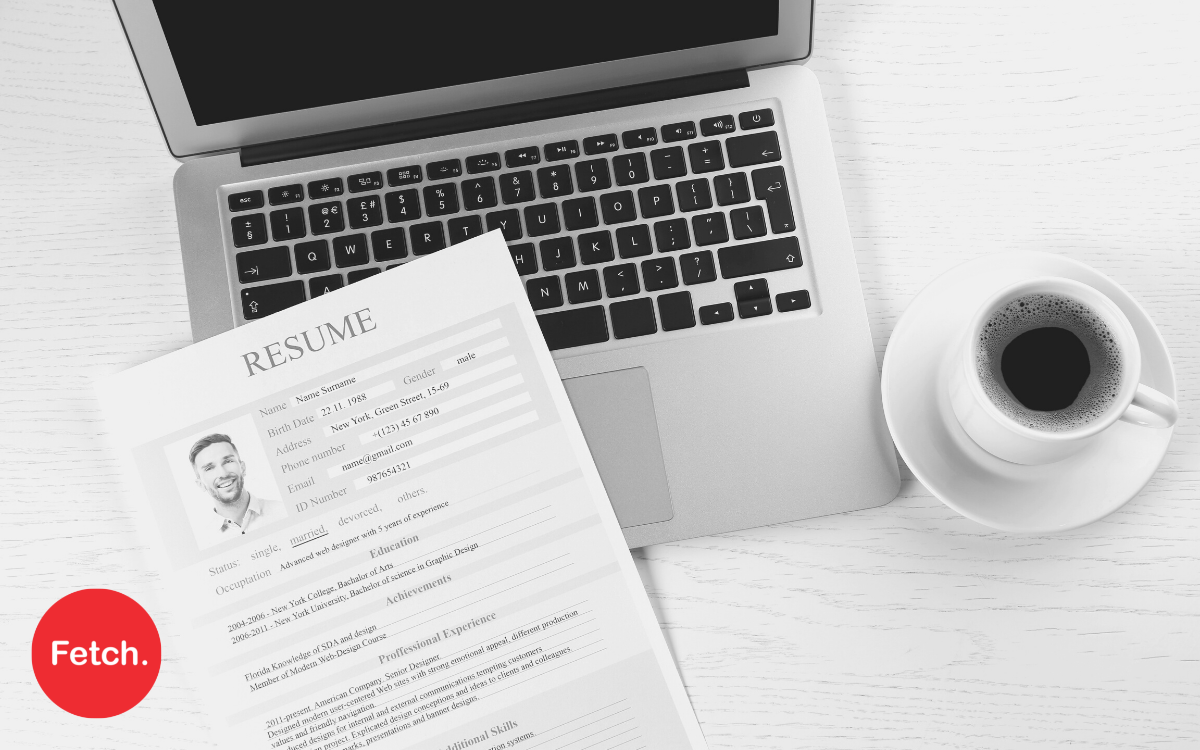Connecting...
How To Write a Winning CV in 2022
Published date: 2022/05

When it comes to applying for jobs, a well written CV (or Resume) often means the difference between an interview or a rejection.
In a world where first impressions count, a well presented, easy to follow CV means a lot to a hiring manager. Depending on your industry, you may need to tailor your CV depending on the role you’re applying for. Whether you’re looking to adapt your CV to a specific role or hoping to write something more universal, this guide was designed to ensure you land that first interview.
So, what do you need to include in your CV?
While the structure of a CV is flexible, allowing you to accommodate for your unique skill sets and experiences, there are sections that employers expect to see. These include:
Name, Professional Title, and Contact Details.
These should be presented in an easy place to spot (if you’re unsure, placing these at the top of your document works). You should avoid using ‘curriculum vitae’ or ‘CV,’ or Resume as the title, it’s a waste of valuable space. Instead, treat your name as the title instead.
When it comes to your contact details, your email address and phone number(s) are essential. Once upon a time, it was customary to include your full address on your CV. Today, you simply need to list your suburb. If you like, you can also include a link to your LinkedIn profile in this section – ensure it’s up to date!
Personal Profile/ Summary
A personal profile (sometimes referred to as a personal summary, personal statement, career objective and professional profile), is one of the most important aspects of your CV. A personal profile is a short paragraph that sits underneath your name and contact details. It aims to give prospective employers an overview of who you are and what you’re looking for. You should tailor this to the job you’re applying for, highlighting specific qualities that match you to the role.
Aim to keep your personal statement no longer than a few sentences. To make the most of this section, you should try to answer the following:
Who are you?
What can you offer the company?
What are your career goals?
Experience and Employment History
Your employment history section gives you the chance to outline your previous jobs, internships, and work experience. In this section you should list your experience in reverse chronological order. When doing this, state your job title, the employer, the dates you worked and a line that summarises your role. After that, bullet point your key responsibilities, skills, and achievements, and bolster each point with powerful verbs and figures to support each claim and showcase your impact.
Tip: it helps to choose the duties most relevant to the job you’re applying for, especially if it’s a long list. If you have many years’ worth of experience, you can reduce or remove completely the detail of old or irrelevant roles.
Education and Qualifications
Like your experience section, your education should be listed in reverse chronological order. Include the name of the institutions and the dates you were there, followed by the qualifications and grades you achieved. If you have only recently left education, write your degree like so:
Institution name – Dates attended (from – to)
Qualification/subject – Grade
For professionals that are a little further along in their careers, you should lay your qualifications out in this way:
Qualification, grade – Institution – Year
Additional Sections
Key skills: If you’re writing a functional CV or have some abilities you want to show off to the employer immediately, insert a key skills section underneath your personal profile. You should aim to detail four to five abilities at most.
Hobbies and interests: If you feel that your CV is lacking, you can boost your document by inserting hobbies and interests at the end. This can help to show how well you fit into the company or the industry.
Formatting and Spacing Guidelines
Length: The standard length of a CV is two pages. On average an employer will only look at your CV for 7-10 seconds, so it is important to keep this to a minimum.
Headings: Each section must be introduced by a bold heading to ensure an easy read.
Font type: Most employers will receive your CV in a digital format, so choose a clear font like Calibri or Arial.
Font Size and Page Margins: The body of your CV should be between 10 and 12pt font, and your headings between 14 and 18pt. Keep your page margins around 2.5cm, but never reduce them to less than 1.27cm or your CV will appear cluttered and hard to read. White space ensures clarity and professionalism.
Proofreading and Consistency: Your formatting must be consistent throughout your CV to keep it looking professional. Don’t put your employer off by including typos and inaccuracies; proofread your CV to ensure there are no mistakes.
Great! Now you're ready to begin applying for jobs with confidence! Good luck!
This blog was written by our Senior Civil Infrastructure Consultant, Matt Lenagh. Matt spends heaps of time looking at CV’s!
You can view our live jobs here. Or connect with Matt on LinkedIn here.
